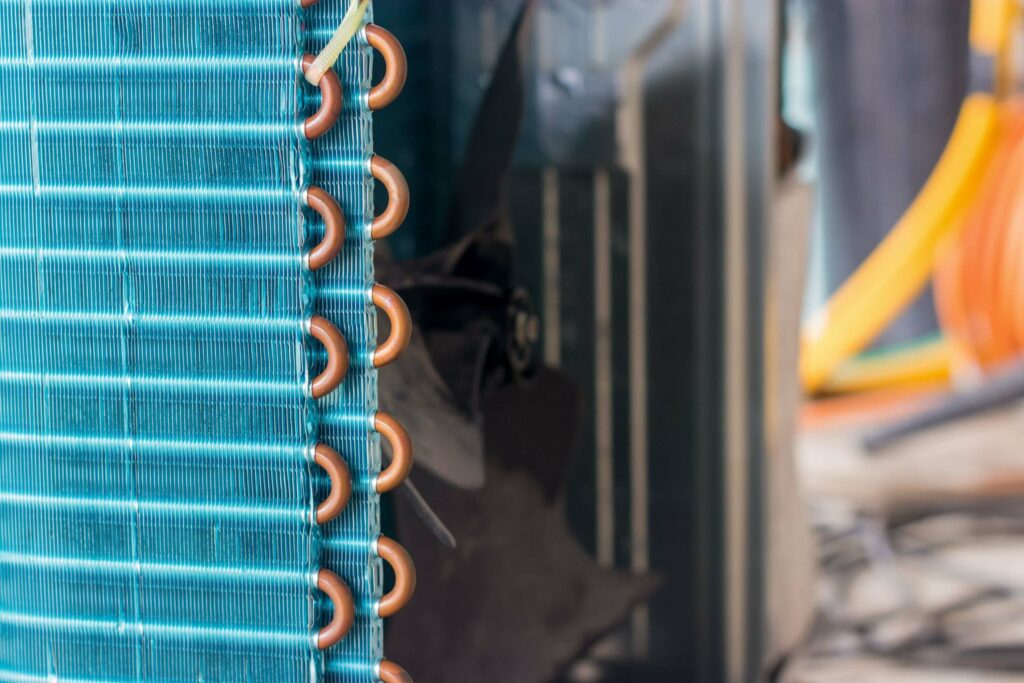Frozen Coils
Frozen AC Coils
If your air conditioner or heat pump unit is showing signs of ice, you could be noticing the initial red flags of a bigger problem. Don’t ignore ice on the outside unit’s coils. Here are some reasons why your AC’s coils are frozen and what you should do about it.
Dirty Air Filters
The most common reason homeowners see ice on their system’s coils are dirty air filters. Before doing anything else, remove and check your air filters for dirt buildup and discoloration.
A 1-inch air filter can last up to 3 months, but depending on your location, the time of year, and whether or not you have pets in the home, you may need to replace your filter every month.
Why Dirty Air Filters Cause Ice Buildup
There are two reasons why dirty air filters will cause your coils to freeze over.
-
Homeowners tend to purchase air filters with the health and safety of themselves and their families in mind. However, air filters don’t only prevent particles that cause allergies and illnesses from circulating throughout your home, they prevent dirt, dust, pollen, dander, and more from reaching your unit’s sensitive equipment. When your unit’s coils become dirty airflow is restricted and heat can’t be taken in or escaped as effectively. Among other things, this will lead to ice formation.
-
As your filters collect dust and other particles, the air that typically flows freely through the filter will become more restricted. A lack of airflow caused by an obstruction somewhere is a very common reason homeowners in Austin will see a frozen outdoor unit.

What To Do About Dirty Filters
You should check your 1-inch filters periodically. Depending on the season, a 1-inch filter may last you 3 months, however, in Austin it’s not uncommon to need an air filter change every 1-2 months in the summer.
If you’ve checked your filters and they’re clean, your coils may still be dirty or airflow could be restricted in other ways.
4 More Ways Airflow Can Be Restricted & Lead To Frozen Coils
When You Should Call a Professional About Frozen AC Coils
If you’ve checked your filters, cleared the outside unit, and unblocked your vents, and ice returns to your unit when you turn it back on, it’s time to contact RedHome Services for a professional assessment so you can get in front of larger issues.
Why Stopping Ice Formation Is So Important for Your AC
Occasionally, homeowners will notice the first instances of ice on their unit before they notice any other symptoms of frozen coils. However, it’s much more likely that you noticed your coils were freezing over after you started experiencing one of the following:
-
Hissing
-
Reduced cooling
-
Higher energy bills
-
Water puddles or leaks
-
A constantly-running unit
-
Increased indoor humidity
While initially, these symptoms may be mild, they can indicate much more serious problems in need of immediate professional attention. Left untreated, ice on your AC’s coils can quickly add unnecessary wear and tear and damage to costly components including your compressor.
Refrigerant Leaks
Refrigerant leaks aren’t uncommon in older units, but can also occur in newer systems for a variety of reasons. One of the warning signs of a refrigerant leak is ice on the unit. You may also notice poor cooling, hissing sounds, and increased energy consumption. This is unfortunately one of the more serious problems a homeowner can run into because continuing to run an AC low on coolant can result in severe damage to your entire system.
Whether you strongly suspect a coolant leak or not, it’s advisable to contact an HVAC professional as soon as possible if you experience any of the symptoms listed above.

Schedule Maintenance to Avoid On Your AC
Ensure your system is clean and free of buildup, debris, and obstructions with regular maintenance. Regularly scheduled proactive maintenance is designed to catch minor problems early so they don’t have a chance to evolve into unmanageable repairs.
